MARCH 2024
BRIDGES OF JAPAN (PART 2)
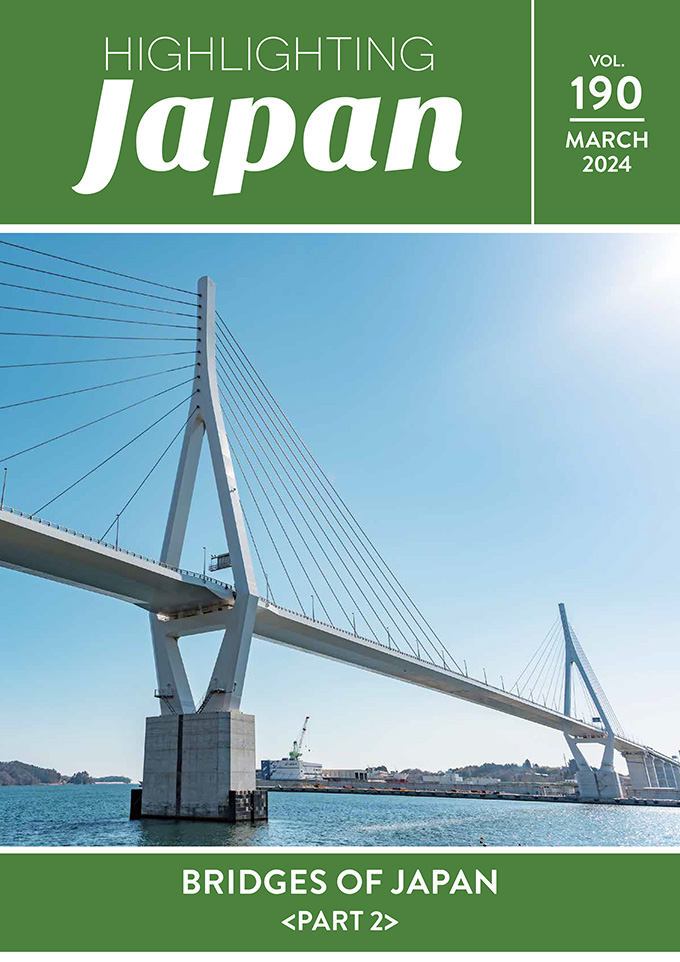
INDEX
-
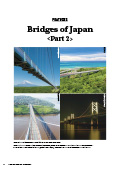
- THEME FOR MARCHBRIDGES OF JAPAN (PART 2)
-
Japan adopted Western bridge-building techniques as part of its extensive modernization, which began in the mid-to-late 19th century. Today, Japanese bridge-building is known for its world-class technology. In this issue of Highlighting Japan, readers will discover a number of very special bridges—one built as a symbol of recovery from the Great East Japan Earthquake, one that has become a city landmark, the bridges connecting islands, one built in the Democratic Republic of the Congo in a Japanese international cooperation project, and others.
FEATURES
-
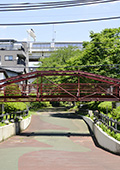
- Japanese Bridges — Continuously Evolving Since the Time of Modernization
-
Interview with Professor Emeritus Yamada Kentaro of Nagoya University
- PDF(318KB)
-
HTML
-

- Kesennuma Bay Crossing Bridge: A Symbol of Tohoku Reconstruction
-
Introducing the Kesennuma Bay Crossing Bridge, which the Japanese government has been developing as a major project to promote recovery from the Great East Japan Earthquake.
- PDF(233KB)
-
HTML
-
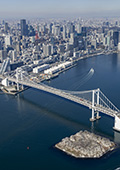
- The Rainbow Bridge, A Symbol of Tokyo
-
Introducing the Rainbow Bridge, which opened as a multimodal transportation facility connecting the Tokyo Waterfront Subcenter and the city center. It celebrated its 30th anniversary in 2023.
- PDF(2,133KB)
-
HTML
-
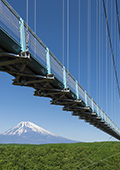
- Enjoying the Spectacular Panorama from Mishima Skywalk
-
Introducing the Mishima Skywalk, a pedestrian-only suspension bridge that offers simultaneous views of Mount Fuji, Japan's highest mountain, and Suruga Bay, the country's deepest ocean bay.
- PDF(279KB)
-
HTML
-
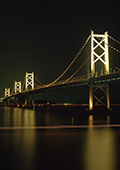
- Seto-Ohashi Bridges — The Dream Bridge That Connects Honshu with Shikoku
-
Introducing the Seto Ohashi Bridge, which consists of six bridges connecting Honshu and Shikoku.
- PDF(309KB)
-
HTML
-
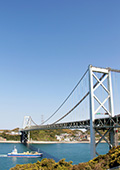
- The Kanmon Bridge — A Key Transportation Link Between Honshu and Kyushu Crossing the Kanmon Strait
-
Introducing the Kanmon Bridge, a 1,068-meter-long suspension bridge that connects Honshu and Kyushu.
- PDF(227KB)
-
HTML
-
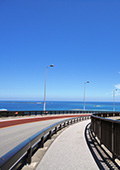
- The Beautiful Nirai Bridge and Kanai Bridge, Enhancing Okinawa's Landscape
-
Introducing the Nirai Kanai Bridge, a hairpin curve on Prefectural Route 86 in Nanjo City on the southern part of the main island of Okinawa.
- PDF(329KB)
-
HTML
-
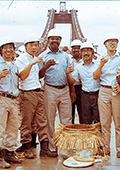
- Technology Inherited from Japan Supports the Maintenance of Democratic Republic of the Congo's Matadi Bridge
-
Introducing the Matadi Bridge, a suspension bridge in the Democratic Republic of the Congo that was built under an international cooperation project carried out by Japan.
- PDF(205KB)
-
HTML
Also
-

- POLICY-RELATED NEWSDevelopment of the Outcomes of the "Justice Affairs Diplomacy" Ministerial Forum: Initiatives to Further Promote "Justice Affairs Diplomacy"
-
- PDF(937KB)
-
HTML
-
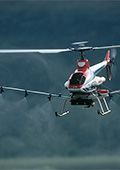
- SCIENCE & TECHNOLOGYUnmanned Helicopters Fly into New Fields: Control Devices Developed to Expand Utilization from Agriculture to Disaster Recovery
-
- PDF(1,315KB)
-
HTML
-

- MY WAYIntroducing Delicacies from Overseas, Including Ukraine and Central Asian Countries, to Japan
-
- PDF(1,717KB)
-
HTML
-

- THE BEAUTY AND THE SPIRIT OF JAPAN: FROM THE JAPAN CULTURAL EXPO 2.0Great Hall of Traditional Okinawan Theatre: Performance and Promotion of Kumiodori and Ryukyuan Dance
-
- PDF(1,041KB)
-
HTML


